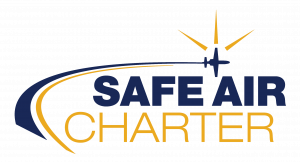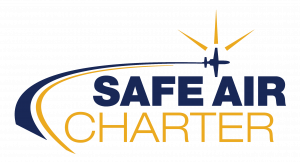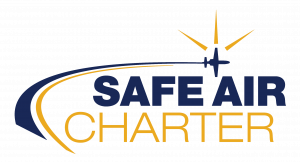safe_charter_operations
Pilots, Owners, and Operators
Air charter operations require a  higher level of FAA pilot training and certification than pilots who may take family or friends for an airplane ride.
higher level of FAA pilot training and certification than pilots who may take family or friends for an airplane ride.
Rogue Operators in the News & Enforcement Actions
The FAA has taken a number of actions to ensure FAA aviation  inspectors are equipped with the tools and knowledge they need to investigate illegal charter operations.
inspectors are equipped with the tools and knowledge they need to investigate illegal charter operations.
Can You Spot The Illegal Charter? (11 X 14, English and Spanish)
Can You Spot The Illegal Charter, 11 X 14 poster, English and SpanishCan You Spot The Illegal Charter? (8-1/2 X 11, English and Spanish)
Can You Spot The Illegal Charters, English and Spanish versions of 8 1/2 X 11 posters.Contact Us

If You Suspect Illegal Air Charter Operations, Report It
- 1-888-SKY-FLT1 or 1-888-759-3581
- Email Safe Air Charter
- FAA Hotline
- Flight Standards District Offices
- Illegal Charter Hotline
- National Air Transportation Association — Fly Smarter: Avoid Illegal Charter
All reports are forwarded to and reviewed by the FAA.
Thinking of Chartering an Aircraft?
Wednesday, February 26, 2025Consumers
If you decide to charter an  aircraft, do your research. Illegal air charter operations pose serious safety hazards, and the FAA works aggressively to identify and shut down rogue operators. Legal/licensed air charter operators (MS Excel) incur relatively high overhead costs to maintain the aircraft, train and test crew members, and stay compliant with FAA and TSA regulations. If the deal sounds too good to be true, it probably is.
aircraft, do your research. Illegal air charter operations pose serious safety hazards, and the FAA works aggressively to identify and shut down rogue operators. Legal/licensed air charter operators (MS Excel) incur relatively high overhead costs to maintain the aircraft, train and test crew members, and stay compliant with FAA and TSA regulations. If the deal sounds too good to be true, it probably is.
It's important to verify the legitimacy of the charter operator before you book your flight. When paying for an Air Charter, ask to see the Operator's Air Carrier or Operating Certificate to validate that the aircraft has authorization for charter use. If the operator refuses to allow you to see the required authorization, look for a charter operator willing to provide you with that information. Before entering into an aircraft lease, ensure you understand and are willing to accept your responsibilities for compliance with air safety regulations.
Learn more about Chartering an Aircraft, A Consumer Guide to Help You Fly Smarter (PDF). Look up your aircraft with the FAA's Aircraft Inquiry Registry.
Red Flags that Indicate a Company May Not Be a Legitimate Operator
- If the company provides the aircraft and at least one crewmember, yet attempts to transfer operational control to a consumer via any document.
- A lack of Federal Excise Tax charged to the consumer. Legitimate operators have to charge this. If the price is too good to be true, it probably is.
- A lack of a safety briefing or passenger briefing cards.
- Any evasiveness to questions or concerns. Legitimate operators should be transparent and helpful.
- If the pilot or someone associated with the company coaches passengers on what to say or do if an FAA aviation inspector meets the aircraft at its destination.
- Can You Spot the Illegal Charter? (8 1/2 x 11, Poster in English and Spanish)
Regulations

FAA Regulations Governing Charter Operations
Air operators must fully understand and comply with the following Code of Federal Regulations (CFRs) when operating within the national airspace:
- 14 CFR Part 91 — General Operating and Flight Rules
- 14 CFR Part 119 — Certification: Air Carriers and Commercial Operators
- 14 CFR Part 135 — Operating Requirements: Commuter and On Demand Operations and Rules Governing Persons On Board Such Aircraft
Aircraft Owners and Operators
Ensure you fully understand the requirements for legitimate leases as explained in the following FAA Advisory Circulars:
Pilots

Air charter operations require a higher level of FAA pilot training and certification than pilots who may take family or friends for an airplane ride. Private pilots may neither act as pilot-in-command (PIC) of an aircraft for compensation or hire nor act as a PIC of an aircraft carrying persons or property for compensation or hire. To engage in air transportation a pilot must hold a commercial or airline transport pilot license and must operate the flights in accordance with the requirements that apply to the specific operation conducted (e.g., part 135). Read the FAA's Information Letter to Pilots below to learn about additional operational requirements when piloting an aircraft subject to a dry-lease agreement.
certification than pilots who may take family or friends for an airplane ride. Private pilots may neither act as pilot-in-command (PIC) of an aircraft for compensation or hire nor act as a PIC of an aircraft carrying persons or property for compensation or hire. To engage in air transportation a pilot must hold a commercial or airline transport pilot license and must operate the flights in accordance with the requirements that apply to the specific operation conducted (e.g., part 135). Read the FAA's Information Letter to Pilots below to learn about additional operational requirements when piloting an aircraft subject to a dry-lease agreement.
Check out the FAA's Get Your Part 135 Certification YouTube playlist for a step-by-step of the application process.

